Blood Bowl’s first edition was released all the way back in 1987, which means we are creeping up on the forty-year mark for one of GW’s most enduring and popular specialist games. In those early editions of the game before its 2016 revival, there were a wealth of miniatures released in both metal and plastic, and they include some of the most iconic; miniatures that have defined the aesthetic of the game ever since. In this article we’re going to take a little trip back through time to look at some of those early figures and the stories around them.
First Edition
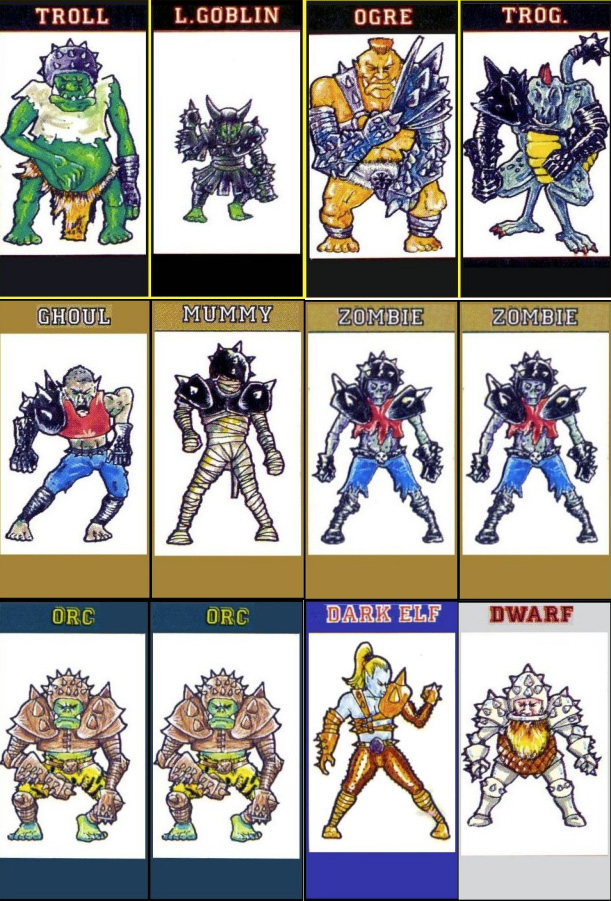
When Blood Bowl first released there were no miniatures in the game box. It came with a bunch of (very cool) cardboard standees. But GW supported the release with a range of eleven metal minis. The Ogre, who was the cover star of the game box (illustrated brilliantly by Brett Blevins), was the only big guy. Then there were two Orcs, two Humans, two Elves, a Dwarf, Skeleton, Zombie, and Skaven. The game was simpler then, and the range of positionals that we all take for granted now was just a distant dream, so having one or two minis for each race was not quite as limiting as it sounds.
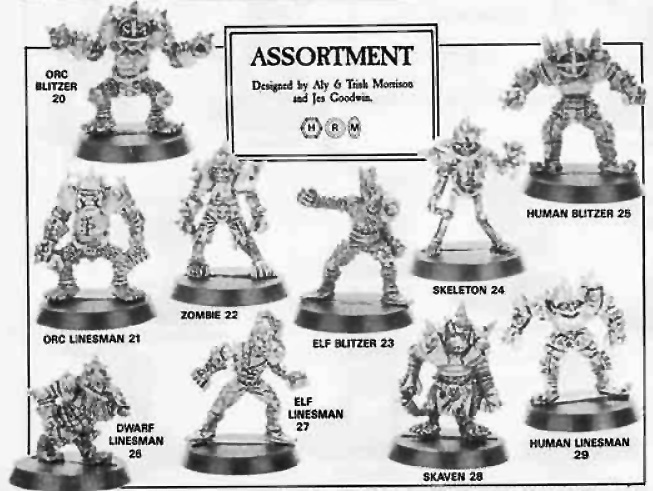
These minis certainly embodied the aesthetic that the rest of the game art had established. An almost-American Football look, with some more fantastic and lethal touches (i.e. spikes). The Skaven is quite notable as they had been introduced to the world of Warhammer only months before, and the Skaven Blood Bowl team and its accompanying lore, included in White Dwarf #86, was one of their first major appearances in any GW product.

But it is the Ogre who really stands out as one of the definitive BB minis. From it’s absurdly-spiked shoulderpad, to its mohawk haircut, and topped with a mean-as-hell expression, this is a mini that perfectly encapsulates the kind of guy you would not be want to be lining up against on a Blood Bowl field.
Second Edition
Blood Bowl’s Second Edition followed hard on the original’s heels in 1988, and saw a heavy rework of the rules, which had originally been largely based on the Warhammer Fantasy Battle game. The boxed release actually included the first plastic miniatures, albeit containing fifteen copies of a single monopose figure for the Humans and Orcs each (the later Dungeonbowl release introduced a similar set for Elves and Dwarves). But the metal miniature support was ramped up significantly, with the vast majority of races getting full teams of varied poses to represent the new positional variety of the squads.
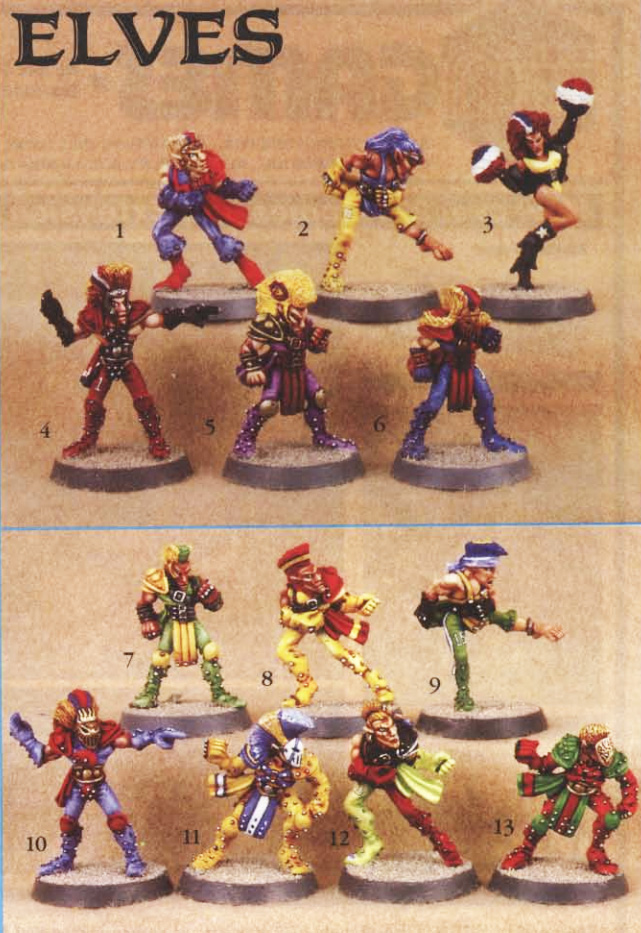
My pick of the 2nd Ed. teams would be the Elves. Certainly one of the most iconic sets of BB minis ever released, the hockey mask and extravagant mohawk hair do’s were probably the pinnacle of the ‘cyber-fantasy’ aesthetic that BB’s creator Jervis Johnson envisioned for the world of Blood Bowl. Sculpted by Jes Goodwin, they had strong echoes of the same redefinition of the Eldar aesthetic (particularly through Harlequins) that Jes was doing for 40k at the same time.
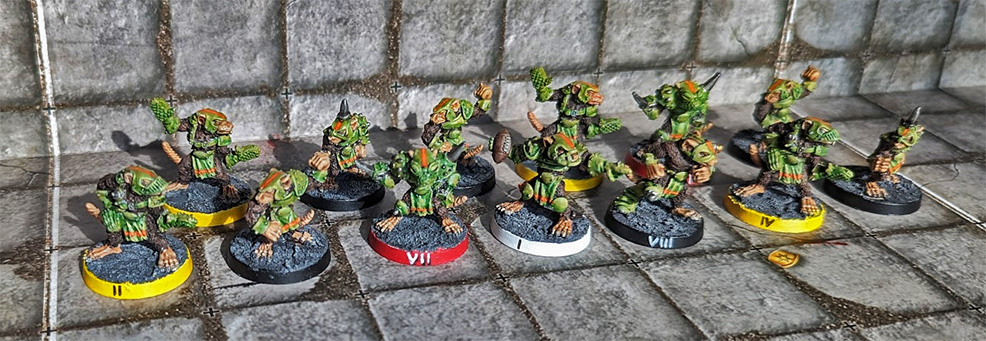
Jes also sculpted one of the other standout teams from this edition, the Skaven, currently being played by your humble author in London’s Dragon Bowl League.
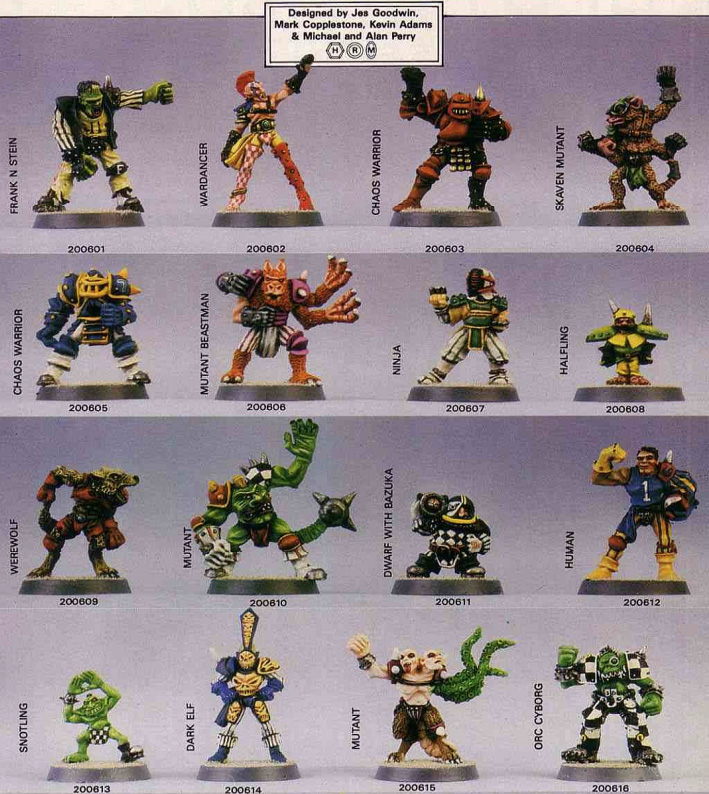
This edition also saw the arrival of Star Players, and a plethora of unique sculpts were released for them. Ninjas, chainsaws, bazooka-wielding Dwarves, cyborg Orcs (?!); yes, GW went absolutely nuts with this lot, but somehow it all made sense in the wacky world of Blood Bowl, and many of these Stars remain firmly in the game to this day.
Third Edition
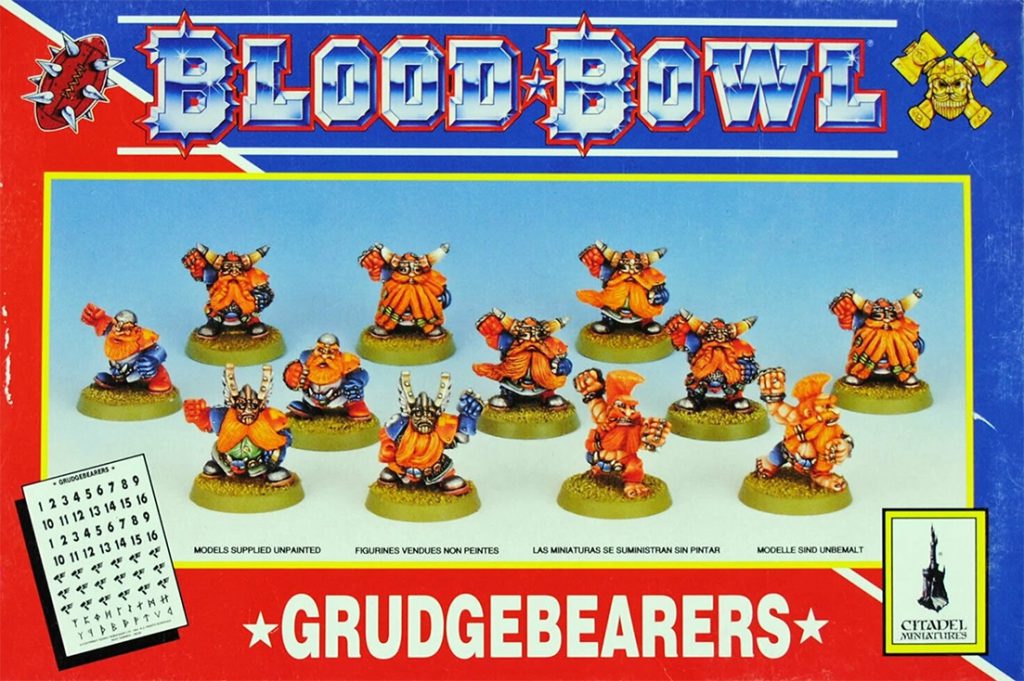
The third edition of Blood Bowl, released in 1994, once again released with plastic Human and Orc teams in the box, this time in a full range of positionals and poses. The game however was suffering a bit of an identity crisis. Many of the teams, players, and corresponding models were explicitly brought closer both aesthetically and in terms of positional naming (e.g. Dwarves gained Troll Slayers, Skaven Blitzers became Stormvermin) to their counterparts in the mainstream Warhammer World.

My personal opinion is that many of these minis represent a low point for Blood Bowl, looking uncannily like de-weaponised Fantasy Battle infantry, with mostly identical raised-fist poses that suggest little to do with sports. Jervis later admitted this whole aim of alignment was a mistake, and when the fourth edition arrived, Blood Bowl miniatures slowly returned to their more distinctive and fantastic roots.
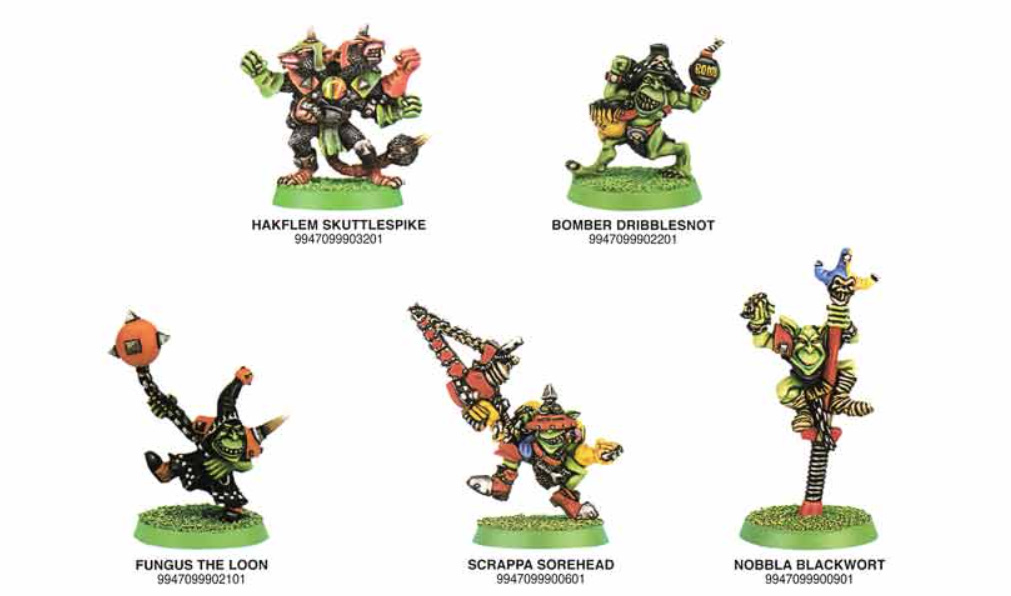
Nevertheless there are still some nice sculpts from this period, including some of BB’s most iconic Star Players, such as Ripper the Troll, and the Goblin secret weapon stars.
Fourth Edition
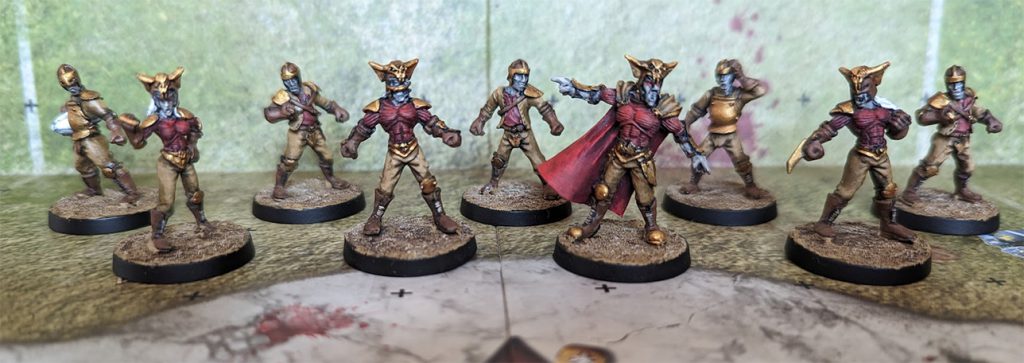
Blood Bowl’s 4th edition was released at the start of the millennium, and was an iteration and expansion rather than total rework of the Third Edition rules. It did not initially have a boxed release, appearing as a set of rules in the specialist Blood Bowl Magazine. But soon a number of new teams were released to accompany the edition, including Amazons, Necromantic, Ogres, Vampires, and others.

The Human team from this period, which was released late in the edition, was particularly notable as it consisted of sixteen different sculpts; to my knowledge the only Blood Bowl team GW have ever released with an entire roster of unique players.
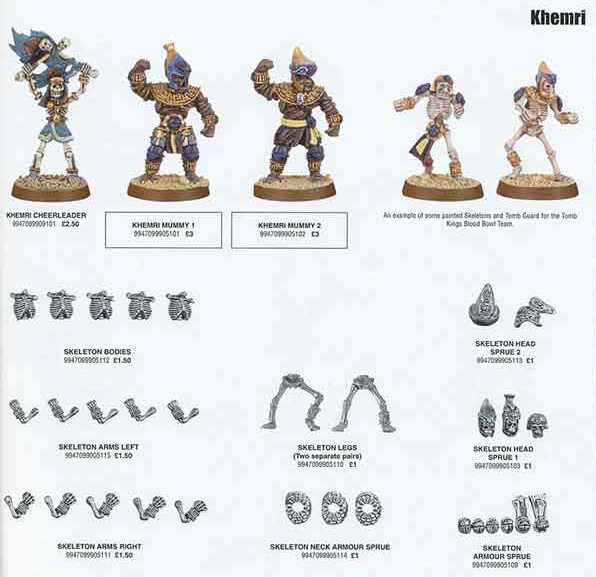
The Khemri team was also an interesting experiment, with each mini having multiple possible parts and some different head options.
Many of the teams and minis from this period had limited runs and are extremely rare now. And shortly after this period, Blood Bowl entered its ‘completely forgotten about by GW’ stage, until its grand return in 2016.
Before we wrap up I’d just like to say a big thank you to the work of Stuff Of Legends who have done an incredible job archiving the old Citadel miniature catalogues which have been invaluable in compiling and illustrating this article.
We hope you’ve enjoyed this peek into Blood Bowl’s past. If you have any thoughts or feedback, or want to tell us about a much-loved former miniature, you can let us know in the comments below. You can also contact us by email at contact@goonhammer.com


